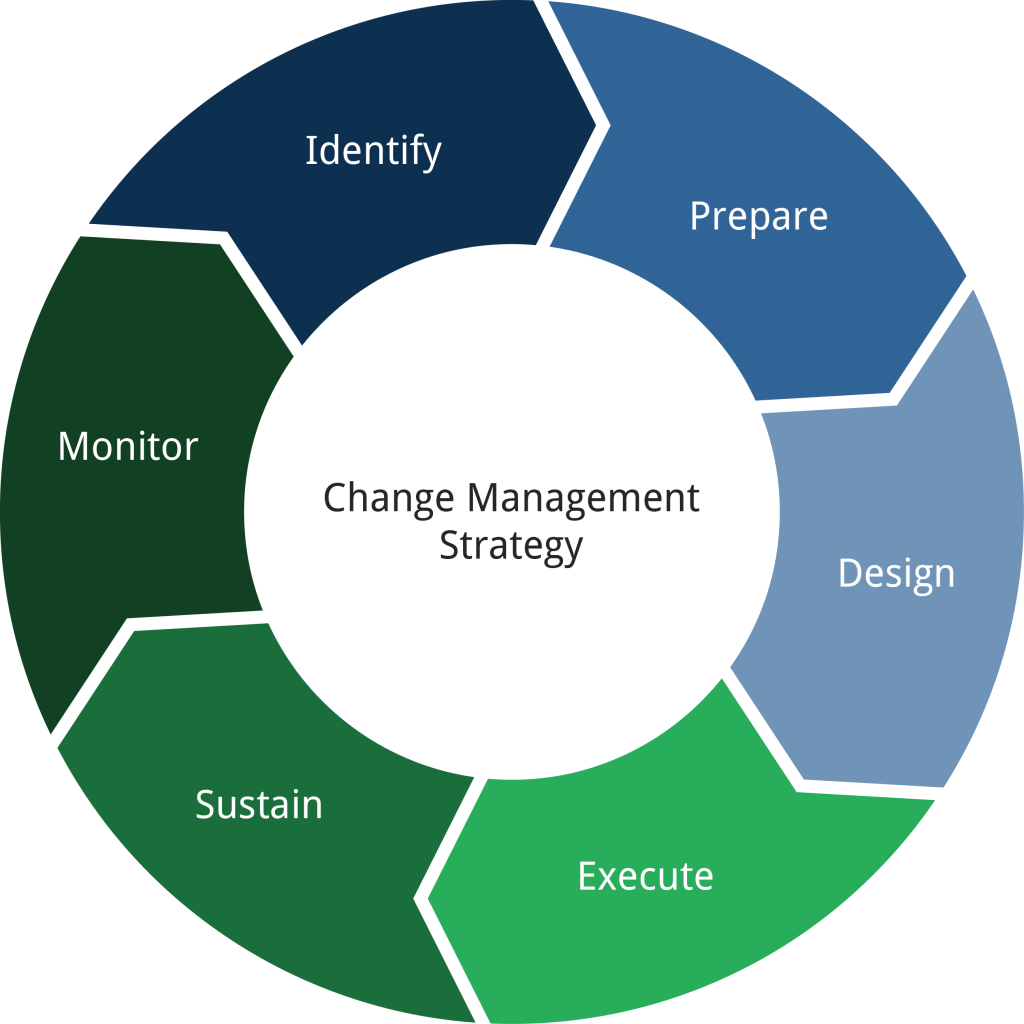In our last blog article, we discussed the importance of change management in the supply chain. Continuing on, we will share some ideas in this article on how to successfully implement change management.
Change management in any organization should be an ongoing process. Just like the supply chain industry in general, business processes should be constantly shifting and growing to meet customer demands. This is why it is critical to have a change management strategy in place. We created the diagram below using information from a few different organizations and educational documents (see sources at the bottom). It shows one example of what a change management strategy may look like.
Change Management Strategy

Identify
This first step in any change management process is identifying a need for change. This is when you see either an opportunity for growth or a need for improvement. There could be a new technology that can help you grow e-commerce sales or a social pressure change in customer demand. There needs to be a clear reason for the change to be occurring.
In this phase you also need to identify what type of change it is, and if your organization is ready. It might be a cultural, technological, or process based change, to name a few. From there, look at your organization’s current resources in that area. Is it appropriate to move forward in the process?
Prepare
If the answer is yes, you are ready to make the change.The next step is preparing both the organization and the people in it. Fortunately, organization preparation is the simple half of the puzzle. Most organizations will complete a cost analysis and risk assessment so they know what the possible outcomes of the change are. They will then create a detailed plan for the different stages that will take place over a given timeline.
When it comes to people preparation, this is where it can get difficult to get everyone on the same page. People are ultimately what makes any organization run. This is is why it is critical that all employees understand why the change is occurring and what the process will look like for them. People have a natural tendency to resist the unknown, so informing employees ahead of time can help ease the transition.
Design
The next step is deciding how the change will happen. This is the detailed plan we discussed when talking about organizational preparation. One critical part of this phase is making sure everyone in top management is on board with how it is going to roll out. In order to have a successful plan, you need to have a united front backing it. You can inform your employees of a change all you want, but if someone in top management is undermining the plan (intentionally or otherwise) it will be unsuccessful.
Execute
Once you have your detailed plan in place and top management is on board, it is time to begin the transition. For this step we are only going to emphasize one thing: communication. You have already created a plan and got everyone on board, now you need to make sure it stays that way. As the transition occurs, be sure to continually update all staff on progress or changes. This will give them peace of mind and keep resistance at bay.
Sustain
Your change management strategy is in action, now you need to continue to sustain the transition. This means constant reviews and communication. Check in with your detailed plan to ensure you are reaching your pre-set milestones. If you are reaching your goals, update employees on this progress. If you are not, you should consider making slight alterations to your plan or extending the overall timeline. In that case, you should make sure any updates are communicated when appropriate.
Monitor
The final phase is continual monitoring. Once the change is fully implemented, you need to continually monitor your processes for any potential areas of change. This means monitoring internal performance along with external changes. If there is an opportunity or threat that arises while monitoring this performance, you will restart the change management process.
This is just one example of what a change management strategy might look like. However, every organization is unique. It is important that you create a change management strategy that fits your individual business needs.
Sources:
Office Overload Solutions – “Change Management”
EBA – “The Change Management Process: Linking the Steps to Successful Change”
Adaptive HVM Ltd – “Change Management”


